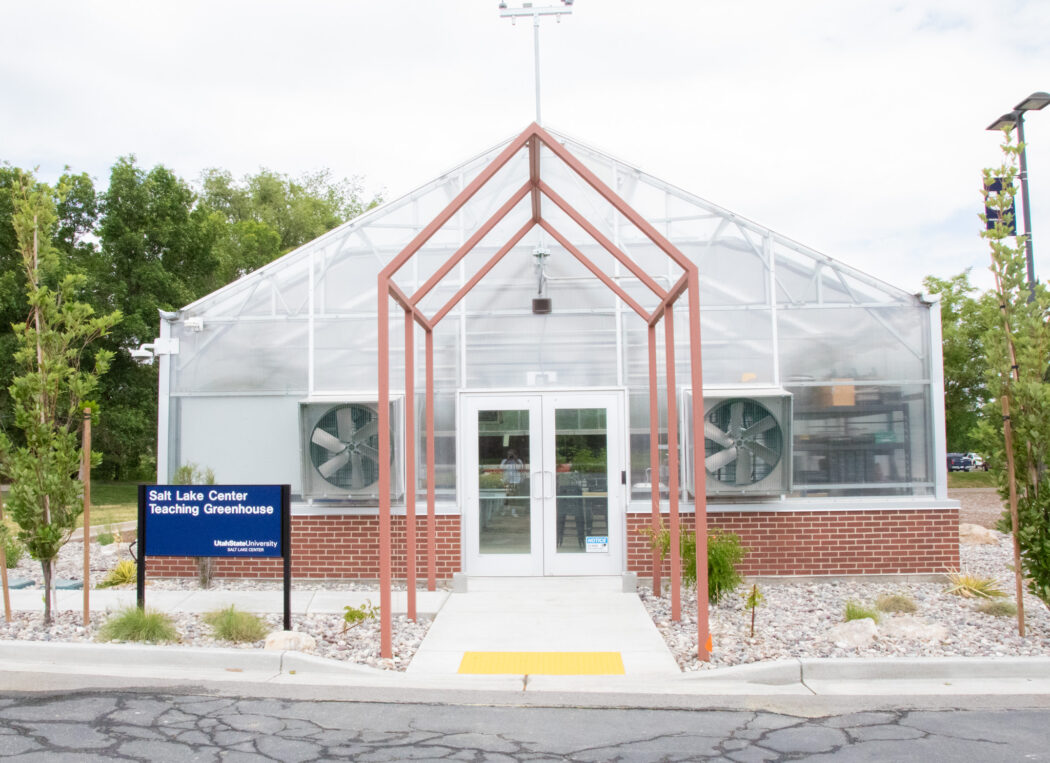Farming helps refugees resettle in Utah
Utah has resettled over 15,000 refugees since 1995, and today, Utah State University Salt Lake Campus is actively working with the resettlement program by providing hands-on experience for refugees and students through their partnership with the New Roots program.
New Roots is a horticulture program that helps Utah-bound refugees grow and sell produce. This could be a means to make a living or to sustain themselves.
This program is managed under the International Rescue Committee, or IRC. The IRC is responsible for settling refugees when they arrive in the U.S.
David Vernon, associate vice president of USU’s Wasatch Region, shared insight on how coming to the U.S. and making a living is not an easy feat for refugees.
“You’ve got refugees who may have had a profession in their country of origin and then they come here and then we don’t have those jobs or they don’t have the right certification for those jobs,” Vernon said.
This is where New Roots comes in. The program has only one requirement: be a refugee. With USU’s partnership, the refugees are being taught how to grow and sell produce. For many of them, this is the first step to building a livelihood in the U.S.
The program currently has 45 refugees, who in the program are referred to as farmers. Some of the farmers depend on the program for an income by selling their produce at farmers markets or to grocery companies such as Whole Foods. Other farmers look at the program for extra income on top of their day jobs.
These farmers can also sell their produce to a program called Community Supported Agriculture, or CSA. This program is a way for residents of the surrounding area to eat locally.
Sierra Govett, the New Roots community garden coordinator, emphasized buying local food is the biggest form of impact American-born citizens can have on the lives of refugees in the area. She also did not hesitate to note the benefits of the program come from far more than just the compensation received from the produce.
“There’s a lot of more intangible benefits from all of these things,” Govett said. “You know, like a sense of community and kind of psychosocial and mental health benefits and physical benefits from being outside and working in the dirt and kind of having somewhere to go.”
Govett also explained how having a connection with the land helps to serve as a sense of home for those looking to put roots down here in Utah.
“It can take a while to feel like it’s actually home when they’ve had to leave what was their home, and so like a connection with the land feels like ownership over some piece of their new home,” Govett said. “And also economic empowerment for those who are selling their produce.”
The majority of refugees New Roots currently sees are from African countries, as well as some Asian countries. The difference in culture, languages and even food can be a difficult transition. New Roots works to provide one comfort from home: vegetables.
“We do have farmers markets, where it’s bringing in a lot of other refugees and new American customers who are very excited to be able to purchase vegetables again that are familiar to them,” Govett said.
New Roots also works with Utah’s food stamps program SNAP, which stands for the Supplemental Nutrition Assistance Program. The New Roots farmers market, which is held from June to mid-October, participates in what is referred to as cash matching for those who use their SNAP cards. This makes it possible for those on food stamps to eat local as well.
USU’s partnership with New Roots has been going on for the last three years. Made possible by grant funds and a greenhouse located in Taylorsville, the University’s horticulture program works with New Roots and teaches students how to grow produce. The work the students do directly impacts the farmers of New Roots.
The word about New Roots has gotten out and there are now talks of expanding the program.
“We have a lot of interest in our program, which is incredible. We have a lot of people who would just like to grow for their families and our community garden program,” Govett said.
The only barrier blocking expansion is land. The program currently works out of a greenhouse in Taylorsville and is looking for more land in the surrounding area.
Senior lecturer Rachel Broadbent works with students in this greenhouse by teaching them how to grow seedlings.
“Basically, it gives the students real life hands-on opportunity to be growing seedlings, for somebody to actually be using,” Broadbent said.
Due to scheduling, the farmers and students do not see much overlap on their time in the greenhouse, but the work both parties do also goes to local food pantries due to a partnership with Community Action Services.
The partnership between New Roots and the university is still in its infancy. Vernon was asked what he hopes the future of this partnership entails.
“I think it’d be pretty cool if some of the refugees ended up being students in our program — that would be kind of nice,” Vernon said.

